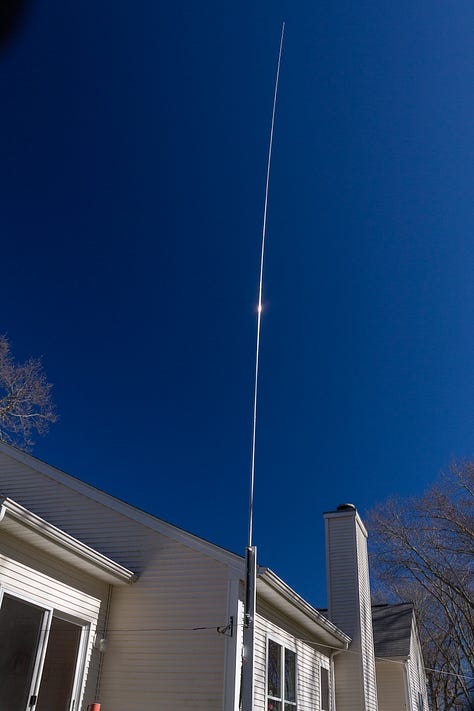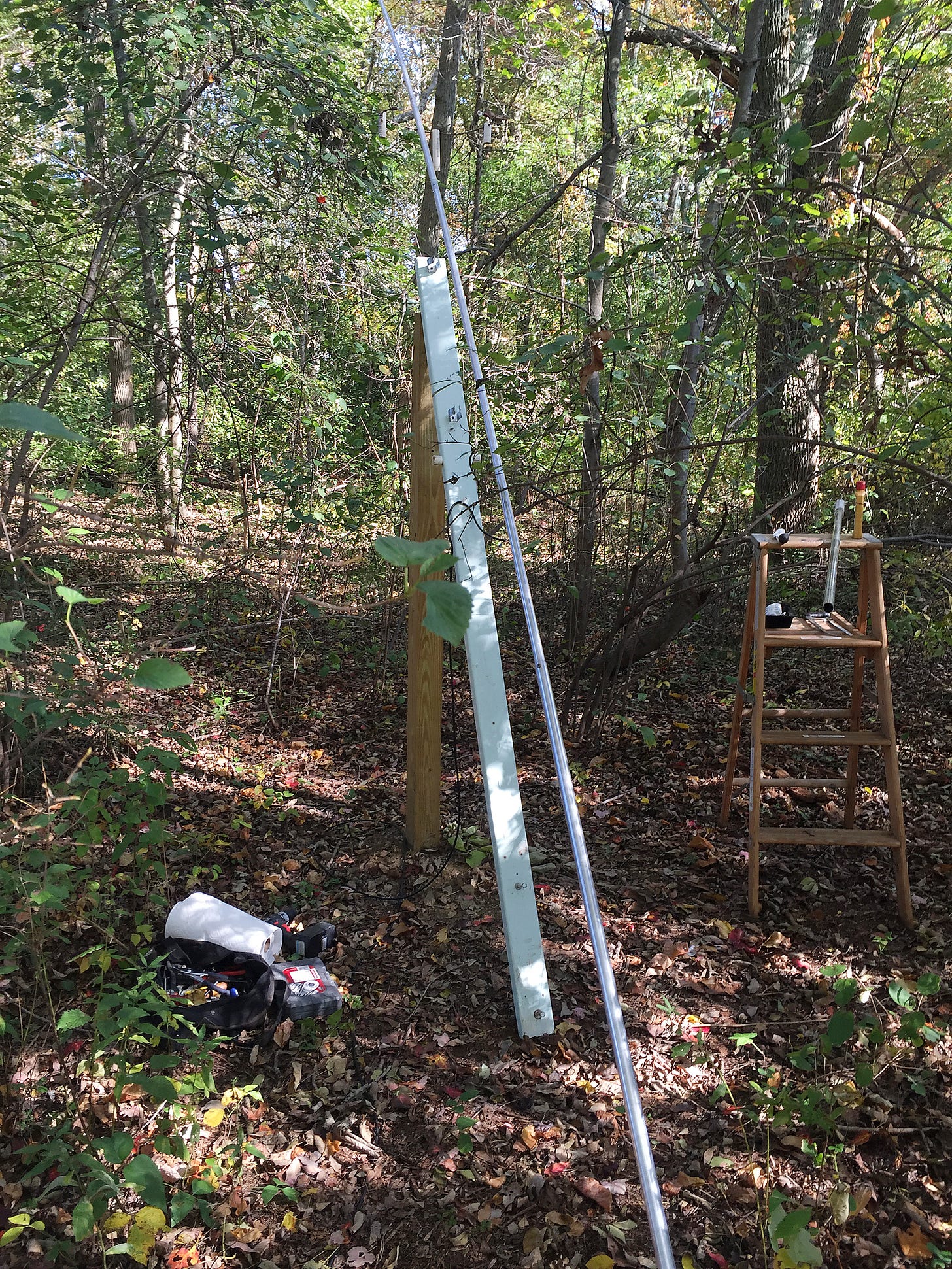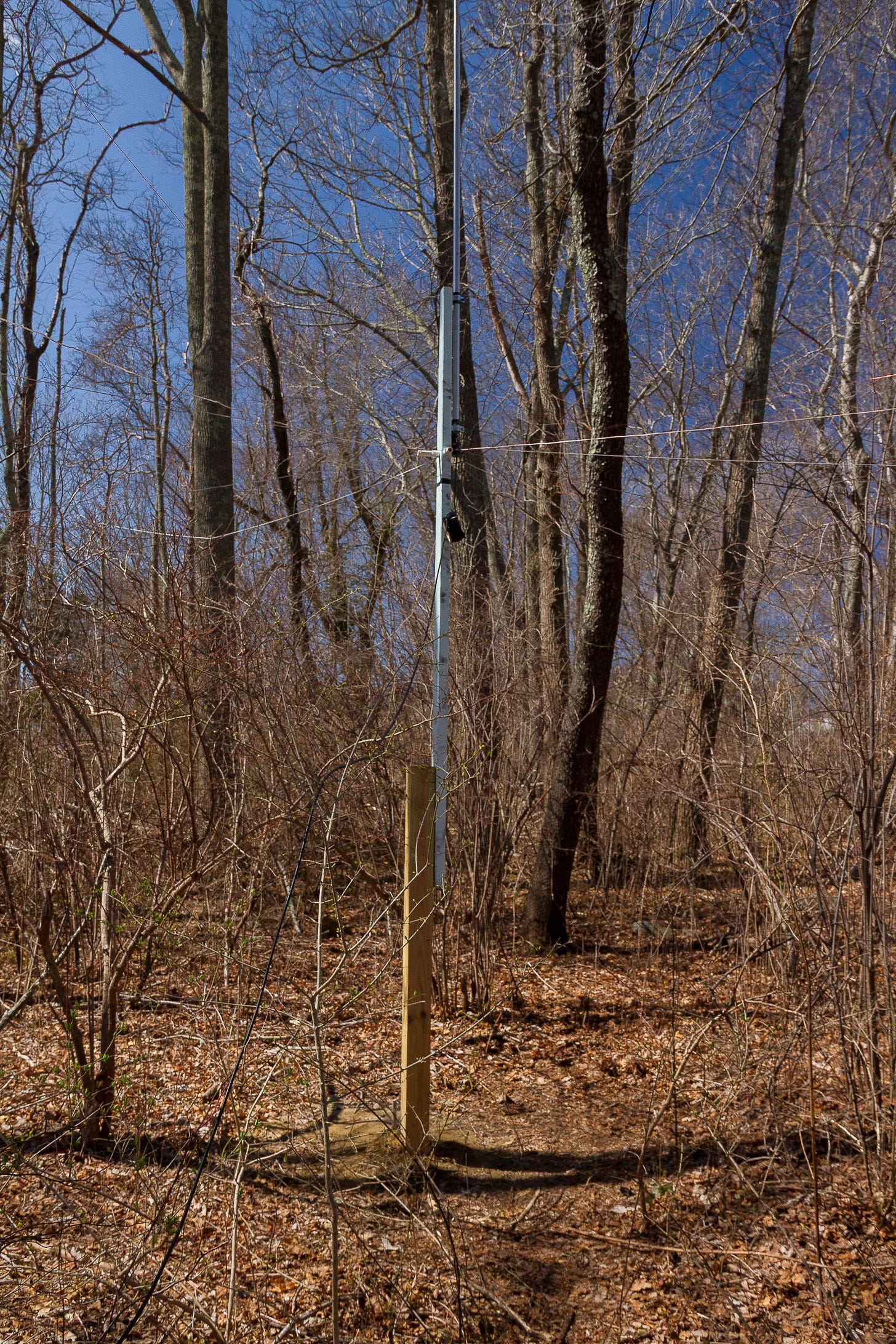Chapter 4
Elevated Verticals: Maximizing Inland Performance
Although inland verticals do not work as well as saltwater verticals, their low-angle performance can be enhanced by raising them up off the ground. Since this eliminates the ground radial system, another way of collecting return currents must be devised. The age-old answer is to deploy wires around the base of the vertical suspended over the ground. How many, how long and how high will be discussed shortly.
Counterpoise Resonance
Raising the vertical above the ground decouples it from the lossy earth, causing the power pumped into the radiator to find its way back to the chassis of the transmitter via the elevated counterpoise wires. Because the aerial floats above RF earth ground, its resonance is affected not only by the length of the vertical radiator, but also by the length and number of its counterpoise wires. This means the counterpoise, itself, resonates. As a result, tuning an elevated vertical requires adjusting the dimensions of the radiator and the counterpoise system.
Judy Garland
One does not approach this by “tuning” the vertical to resonance and then “tuning” the counterpoise to the same frequency. This is because the radiator and counterpoise are mutually-coupled tuned circuits, causing the radiator to “detune” the counterpoise as the counterpoise “detunes” the radiator. This interplay causes the tuning stage to be quite finicky. But once accomplished, the entire contraption “sings” in a way not replicated by ground-mounted verticals employing a system of detuned ground radials. At least in the author’s experience, as possibly evidenced here.
Radiation Efficiency
Maximum radiation efficiency occurs at various combinations of radiator and counterpoise dimensions. As a general rule, the longer the radiator, the smaller the counterpoise diameter, as detailed shortly.1
2 Elevated WIres = 32 Ground Radials
Many readers may have first heard about elevated verticals from work done by Rudy Severns who initially concluded that two elevated counterpoise wires were equivalent to 32 ground radials. This idea gained traction amongst amateurs, inspiring the belief that elevating a vertical eliminated the need for numerous, pesky radials. A period followed where many amateurs installed elevated verticals accompanied by two or perhaps four counterpoise wires.
16 Elevated Wires = 32 Ground Radials
Severns then laborously revisited the matter through a second exhaustive study causing him to raise the minimum number of counterpoise wires from two (2) to sixteen (16). Several aspects of this second study will be detailed later in this chapter. Before doing so, the takeaway for readers is that Severns’s second study produced a wealth of information which supports the author’s contention that raising an inland vertical above the ground transforms it into a different aerial.2
Experimenting with Elevated Verticals: 2016 & 2017
Between awareness of the first and second studies, the author experimented with a pair of elevated verticals sited 8 miles inland in 2016 and 2017. Like Picasso facing a blank canvas, the work began with a 1/4-wave vertical with two elevated wires.
The intent was to replicate the findings of Severns’s initial study by resonating the elevated vertical on 7.150 Mhz. This proved very difficult to do.
First, the author used the equation for a half-wave dipole when initially constructing the aerial. Luckily the author’s father—a theoretical physicist—gleefully corrected this oversight one morning without looking up from the New York Times.
This important contribution is memorialized by wires haphazardly spliced into the counterpoise seen in the photograph, above.
The second impediment to resonating the elevated vertical was an unequal distribution of return currents between the two counterpoise wires. Realigning the counterpoise wires to different compass headings altered the proportions of the current imbalance. This caused the author to assume the current imbalance was primarly due to the aerial’s close proximity the house.
The experiment was moved to a grove behind the house. After clearing dead branches and pruning thorny bushes for a couple of days, the elevated vertical was mounted on a 4x4 post set in the ground.



This opens up possibilities for readers in limited spaces where 1/4-wave ground radials cannot be accomodated.
By this the author means that if you have a vertical and raise it above the ground, you are going to get better signal reports from DX stations.






